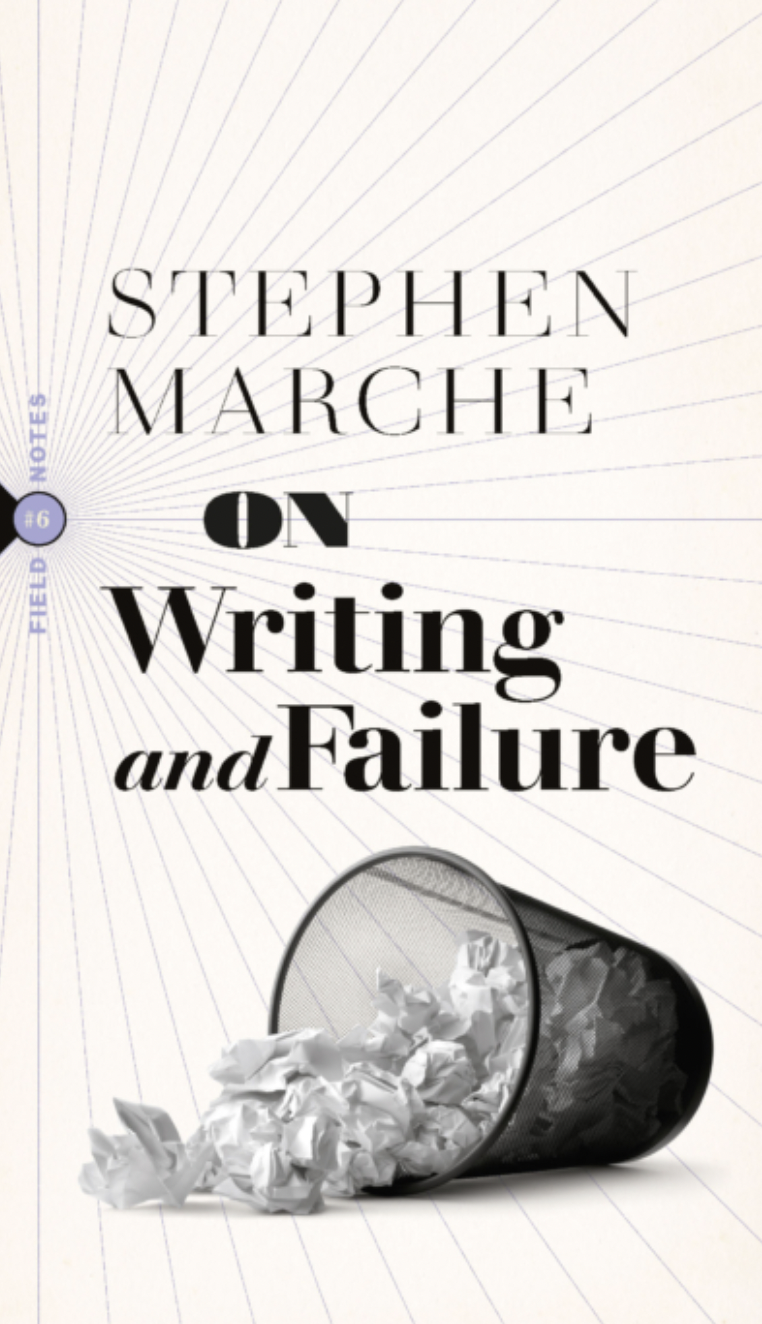
On One of the Most Influential Essays of the 21st Century: Of Snark and Smarm
Stephen Marche Considers the Long Tail of Tom Scocca’s “On Smarm”
Ten years ago, Gawker published Tom Scocca’s “On Smarm.” Gawker died but “On Smarm” lives. For an essay whose material was negligible even at the time of publication—tone and manner in New York media circles in the early 2000s—its relevance has been out of all proportion to its subject. “On Smarm” has been, with the possible exception of Between the World and Me, the most influential essay of its period, and certainly among writers. Many careers, whole online networks, have been directly inspired by it. And its penumbral influence has been even wider.
“On Smarm” is the kind of piece that hovers in the background, framing debates, determining styles, fixing approaches and assumptions even in readers who reject its premises or have never read it. Every critic, every cultural commentator, pro or con, highbrow or lowbrow, fancy or scuzzy, has been shaped by the debates over snark and smarm that came to a head in Scocca’s piece a decade ago.
In a sense, “On Smarm” matters more now than it did when it was published. 2013 was an anomalous moment. Media and literary institutions were feeling the death grip of social media but hadn’t yet been swallowed. The scars from the 2008 crash were forming but the wound hadn’t yet healed. The Boomers, given the greatest institutions the world has ever known, had squandered them out of obliviousness and greed. The Obama years, its walls plastered with posters of hope, had revealed that there was no going back. And in the immediate aftermath of the Obama-Romney election, it was possible, just possible, to imagine that American political discourse was too civil.
2016 changed the valence of snark and smarm. Much has been written about media failures during the Trump years, mostly from those who stress the virtuous social functions of journalism. If only the press had visited more diners in the American heartland or stopped visiting diners in the American heartland, if only they’d taken Trump more seriously or ignored him altogether, if they’d used the right words or not used the wrong words, if they’d taken sides earlier or never taken sides, then the whole Trump fiasco could have been avoided. People blame the press when they don’t have the guts to blame the people.
Still, there was a glaring absence in American media during the Trump years. Gawker was the only publication that could have reckoned with Trump on his own terms. Gawker alone understood the power of celebrity, the unchecked rise of the tech lords, the new contours of the social media landscape and where they were trending. “On Smarm” was a kind of misbegotten mission statement of that aborted understanding.
Incredible as it may seem, in the beginning, the argument against snark was a defense of joy in art, tied neither to the establishment nor to its opponents.
While the historical context behind “On Smarm” has shifted unrecognizably in a decade, the question it faced with admirable clarity—the relationship between power and style—remains unresolved. The question of tone still rules. Look at the current mess on Twitter, look at any op-ed page struggling with wokeness and anti-wokeness, look at stand-up comedy, look at political advertising, look at the Oscars.
We are still trying to decide how nasty to be, or how nice, on whose terms and by what methods and under what justifications. We are still trying to figure out what nastiness and niceness mean, what their ultimate effects are, who benefits, who loses.
The current state of public discourse, if it’s even worthy of that name, is a strange fusion where smarm and snark wrestle and embrace one another in vicious shadowy vacuums. It is less clear than ever which side is winning.
*
The contemporary debate over the use of the word snark began in 2003, so “On Smarm” was itself responding to an essay that was ten years old at the time of publication. In the inaugural issue of The Believer, Heidi Julavits defined snark as “a scornful, knowing tone frequently employed to mask an actual lack of information.” At the time, I knew just what she was talking about.
I remember a friend who was a philosophy professor submitted a book for review; the reviewers described it as “the book of a sneaker-wearing philosophy professor,” and that’s who he was ever after. It genuinely seemed like it mattered at the time: critics judging books by their author photos rather than the writing inside. Maybe it still does, even if there’s nothing that can be done about it.
Snark was upstart criticism, an at least half-honest despair, a recognition of a basic systematic collapse.
Julavits’s original essay presented a nuanced, somewhat fraught response to the institutions of criticism. There was a long section on James Wood, who loomed then like a dour, penny-pinching headmaster over all the kid writers; Julavits admired Wood’s faith in literature but not the judgment that accompanied his faith.
In Wood’s famous essay against “hysterical realism,” then still fresh in mind, Wood had articulated a passionate repression. He liked his sentences standing rigidly at attention, with their beds made and their shoes polished, but he was no snarkist; he knew what he was talking about and he didn’t judge writers by their choice of footwear. Incredible as it may seem, in the beginning, the argument against snark was a defense of joy in art, tied neither to the establishment nor to its opponents. The title of Julavits’s piece was “Rejoice! Believe! Be Strong and Read Hard!” Three exclamation marks in a single title. It was a different time.
“She’d probably hate Gawker,” Gawker wrote in response. Gawker had a slightly different definition of snark than Julavits’s: “righteously indignant but comically defeated, sighing in unison with an audience that believed nothing was as it seemed and nothing would ever really change.” Snark was upstart criticism, an at least half-honest despair, a recognition of a basic systematic collapse. Snark and smarm had a more explicitly institutional framework for Gawker: It was the outsider internet response to unworthy legacy insiders.
David Denby’s 2009 book Snark was the most direct, most acute establishment response to snark. I must say this book holds up much better than I remember. Denby sorts the morass of snark into a manageable pattern, with a lightness of touch and a historical distance that is illuminating in a way nobody else has managed. There are problems, to be sure. Some snark Denby likes—Jon Stewart and Juvenal—and some snark he dislikes—people who hate The New Yorker—and the double standard requires elaborate intellectual gymnastics.
Still, the essayist has a task and Denby fulfilled it: He placed his finger on the fulcrum of the moment. “This is an essay about a strain of nasty, knowing abuse spreading like pinkeye through the national conversation—a tone of snarking insult provoked and encouraged by the new hybrid of print, television, radio and the Internet,” he wrote in the introduction. “It’s an essay about style and also, I suppose, grace. Anyone who speaks of grace—so spiritual a word—in connection with our raucous culture risks sounding like a genteel idiot.”
The sadness of those lines, from the current moment, is the assumptions ingrained in them. How casually Denby could throw around the phrases “national conversation” and “our culture” as if his audience would know what he meant, as if they did not immediately demand answers to the questions “whose nation?” and “which us?”
Tom Scocca’s “On Smarm” resonated on a totally different level than Denby’s book or Julavits’s essay. Snark is whimsical. “Rejoice! Believe! Be Strong and Read Hard!” is practically the whimsicality manifesto. “On Smarm” is self-serious in a way they are not, composed with precision and dispassion. There’s no name-calling, no scabrous rollicking assaults, no snark at all. The piece is toreador criticism. The bull rushes by, there’s a flash of red, and the dagger has stuck.
The tone of virtue is the heart of smarm: “It is a civilization that says ‘Don’t Be Evil,’ rather than making sure it does not do evil.”
A decade of time has led to some mild embarrassments. There’s a full-throated defense of Edward Snowden, which is now at least somewhat complicated by his status as a Putin trophy. Scocca was also pro-Twitter. “New media and social media have an immense and cruel leveling power, for people accustomed to old systems of status and prestige,” he wrote. “On Twitter, the only answer to ‘Do you know who I am?’ is ‘One more person with 140 characters to use.’” But such mistakes are inevitable, inherent to the timeliness of the writing. They’re not even mistakes. In 2013, social media could have democratized discourse rather than devolving into a plaything for tech barons. It wasn’t impossible.
The core of Scocca’s argument remains largely in place. Or rather the several distinct strands interwoven at the core of Scocca’s argument remain largely in place, the first of which is
1. “Everyone’s a publicist.”
The social analysis in Scocca’s argument is entirely accurate, beyond debate at this point. The triumph of image over substance was then and is now a general trend, diffuse and ubiquitous. “The key to making it in the new era, Tom Peters explained to the readers of Fast Company in ‘The Brand Called You,’ was to manage impressions, just like commercial brands do—‘don’t sell the steak, sell the sizzle.’ It was the dawn of a new credentialism, on the authority of the self and the money that the self could hustle,” Scocca writes.
“On Smarm” is one of the great essays describing the new mode of self-curation born out of the internet and social media, and the consequent rise of celebrity, personal branding, and toxic narcissism. The fake-it-till-you-make-it spirit was already in full force in literary circles before then. There had already been Jonah Lehrer, Jayson Blair, Stephen Glass, JT LeRoy, more than enough evidence that literary and journalistic institutions were, at the very least, deeply gullible. The new technologies would exacerbate and expand those fraudulent tendencies beyond recognition. Scocca could see it coming.
But what upset Scocca, what was the uniquely appropriate subject for snark, was not necessarily fraud itself but a fraudulent tone, particularly among writers. “Ideas of ‘authorship’ and ‘Brooklyn’ are being acted out by people, as a bulwark against insecurity,” Scocca wrote. “We have a whole word here at Gawker, ‘writering,’ to describe the tribe of writers whose principal writerly concern is being writerly, and who spend all their time congratulating one another on their writing and promulgating correct rules for writing.” Lying offended Scocca less than posing, which led to the second core argument of “On Smarm”:
2. “Smarm is a kind of performance—an assumption of the forms of seriousness, of virtue, of constructiveness, without the substance.”
The tone of virtue is the heart of smarm: “It is a civilization that says ‘Don’t Be Evil,’ rather than making sure it does not do evil.” The examples of smarmy performances Scocca chooses to dissect are Michael Bloomberg and Dave Eggers. A revealing couple. On the level of substance any comparison between Michael Bloomberg and Dave Eggers doesn’t make much sense. You have a rigid billionaire mayor and a Brooklyn novelist, a right winger and a left winger, a powerbroker and a literary journal founder. I mean, they don’t have much in common except they’ve both appeared at galas. And that’s the point. They were successes.
One dumbed-down, extrapolated version of the smarm-snark debates was the discourse of punching up and punching down.
“The idea of success, or of successfulness, hangs over the whole subject of smarm,” Scocca writes. “It is not true, after all, that the crisis of postmodernity has left us without any functioning system of shared values. What currently fills the space left by the waning or absence of traditional authority, for the most part, is the ideology and logic of the market.” It’s the old story that the great film noir The Big Clock put so well: “It’s always the wrong people who have money.” The structures of authority give success. The structures of authority are unfair. Therefore success is invalid. Smarm is the cover for the illegitimacy of the world. Smarm exists to prove that “what thrives deserves to thrive,” and “what fails deserves to have failed.” Snark exists to tear down the phony self-justifications of the world’s successes.
And here we arrive at an absence, an absence at the crux of the essay. Scocca doesn’t articulate another value outside of the market or institutional validation. He doesn’t offer a way to value people or writing that doesn’t involve money or fame. He can only demonstrate that the money and the fame are illegitimate. Scocca has only his weariness to offer, and he circles the emptiness like water down a drain, drawn and pulled down by the nothingness that motivates him.
Scocca finds himself in a void—obsessed with success but convinced of its invalidity. And the only response is anger. That’s his third point.
3. “Anger is upsetting to smarm—real anger, not umbrage.”
Ten years ago you could argue with a straight face that there wasn’t enough anger in American discourse, that what the United States and the internet needed were more anger.
*
The main line of argument in “On Smarm” is simple enough: In a time defined by image management, the successes are self-justifying frauds, and the only correct response is rage. But “On Smarm” was a mood more than an argument, a celebration of intellectual brutality, a focus on celebrity and its nascent power, the mistrust of winners as such. That mood was more influential than the argument ever could be.
It would be silly to blame defenses of snark, in any articulation, for the hateful social media communities or the outrage economy that followed. At the same time it is true that plenty of admirers used “On Smarm” to justify their own viciousness and laziness. If they attacked people in power (they defined who fell in that category) and were wrong about it, they could still argue they were serving a social function: railing against the powers that be.
“On Smarm” naturally fell into the journalistic tradition of comforting the afflicted and afflicting the comfortable. Saint Orwell, from his niche in the cathedral, bestows upon us the venerable lesson that “if liberty means anything at all, it means the right to tell people what they do not want to hear.” The snarkists would agree. But Orwell didn’t have an inbox full of death threats, like every journalist I know. Orwell was never swatted.
One dumbed-down, extrapolated version of the smarm-snark debates was the discourse of punching up and punching down which started as a debate among stand up comedians but spread to anyone making cultural commentary. Here “On Smarm” is a key to understanding the whole approach. The only equivalence of Dave Eggers and Michael Bloomberg is that they’re successes, they’re “up,” or they were then. For that reason alone, they were valid targets.
Trump was the absolute consummation of both snark and smarm, cynicism in theory and practice. The man was pure snark and pure smarm.
Punching up and punching down has a huge advantage over traditional criticism. It is easy, and therefore efficient. “When I started the site posted about 40 items per day, and I was responsible for 12 of them,” Emily Gould wrote in a description of her early years at Gawker. If you are responsible for a dozen posts a day, you don’t have time to consider the merits of your subjects. You need a basic approach, and snark is basic. Snark doesn’t require, say, deciding on the quality of a piece of writing or unpacking the consequences of a policy. All you have to do is figure up who’s up and who’s down, and punch accordingly, as hard as you can.
But who is up and who is down, as the past ten years have shown, is a question of perspective. The discourse of punching up and punching down began on the left: One should punch up at those above you in the structures of power not punch down at those below you in the structures of power. But the right has an extraordinary capacity to overtake, for its own ends, any rhetorical strategy created by the left, and with incredible speed.
Fake news began as a way to describe Fox News. It soon became how Trump described The New York Times. The program of trying to force libraries to remove dangerous books began as progressive censorship for a better tomorrow through less distorted young minds. The right has taken the program over completely, eviscerating intellectual and academic institutions with the same justification from the other side.
The most substantial failure of Scocca’s “On Smarm” is, oddly enough, its naivete.
4. “Snark is often conflated with cynicism, which is a troublesome misreading. Snark may speak in cynical terms about a cynical world, but it is not cynicism itself. It is a theory of cynicism. The practice of cynicism is smarm.”
Scocca no doubt intended this as a vital distinction. He missed the obvious: Theory and practice are complementary. Trump was the absolute consummation of both snark and smarm, cynicism in theory and practice. The man was pure snark: He railed on the powers that be. He was pure smarm: He floated entirely free of substance in a constant state of self-uplift. He said that he knew the system was rigged because he used the rigging. He also understood that everybody thinks they’re down. Every last body. The number one correlate of voting for Trump in the 2016 election was being in a state of physical pain. The worse a community’s health, the more likely it voted for Trump. Trumpists reveled in snark. They called their victory celebrations deploraballs. They reveled in their opposition to “the performance of virtue.” It’s hard to think of a greater embodiment of smarm, as Scocca defines it, than Hilary Clinton.
Recently, Dave Chappelle brought out Elon Musk to one of his comedy shows, and the crowd booed. Chappelle, the ultimate outsider comic, found himself defending the richest man on earth against the viciousness of the crowd. Who is snark and who is smarm in this scenario? Was the crowd performing virtue? Or was Chappelle justifying the world’s richest man by way of his own virtue? Who is “successful” in this matrix?
It’s good to remember one of Saint Orwell’s less preachy maxims: “Any life when viewed from the inside is simply a series of defeats.” Snark is crude, intentionally so. The human experience is subtle, growing subtler.
*
There is a punk sensibility to “On Smarm,” a nostalgia for authenticity in an era completely overwhelmed by inauthenticity. It had that “Fuck you, I won’t do what you tell me” energy. It was, in part, registering that the usual exchange between snark and smarm had been terminally disrupted by the 2008 crisis and the subsequent decline of legacy media.
In the old days, there was a way to toggle profitably between snark and smarm: First you run Spy magazine then you run Vanity Fair. “I am everything I once despised,” Malcolm Gladwell wrote about Gawker. “When I was 25, I used to write these incredible snotty, hostile articles attacking big-name nonfiction journalists. Now I read them and I’m like ‘Oh my God, they’re doing a me on me!” Indeed, the pattern of attacking then being attacked goes back much farther.
Snark is willed impotence; its origins are world-weariness and a sense of inevitable failure. Any capacity to change anything dissipates on contact with the world.
“In literature young men usually begin their careers by being judges, and as wisdom and old experience arrive they reach the dignity of standing as culprits at the bar before new young bloods who have in their turn sprung up in the judgment-seat,” Thomas Hardy wrote in 1877. “On Smarm” didn’t ride these backroads because they had been closed off. It was authentically adolescent and anarchic in spirit because there was no longer a way to sell out.
As such, “On Smarm” is one of the definitive essays of Generation X. Its motto may as well be the line from Richard Linklater quoted in REM’s “What’s the Frequency Kenneth?”: “Withdrawal in disgust is not the same as apathy.” “On Smarm” reflects a generational failure. We shit all over the Boomers, and they deserve it. They left us in a mess.
But it is also time to face the fact that we have been and are totally incapable of facing the challenge of our moment, intellectually, politically, stylistically. We hate the old values but we refuse to articulate others. We have withdrawn. You can blame our withdrawal on laziness or you can blame it on exhaustion. (The past ten years have been exhausting.) The result is the same.
Snark is willed impotence; its origins are world-weariness and a sense of inevitable failure. Any capacity to change anything dissipates on contact with the world. Snark makes it impossible to run an institution. It hollows the power of criticism: Whether you’re punching up or punching down, however you define up or down, all you’re doing is punching. If you attack people simply because they’re successful, you’re letting them off the hook. Whether their actions are righteous, whether a policy is good or bad, whether their writing is good in and of itself doesn’t matter. You’re going to attack them because of who they are anyway.
Ten years is long enough to learn that automatic negativity, like automatic positivity, is stupid because it’s automatic. “On Smarm” is the most refined, most articulate intellectual expression of the thumbsucking adolescent atavism of our cursed generation. It’s time to grow up from this high school who’s-mean-who’s-nice nonsense. The world doesn’t demand snark or smarm. The world, as always, demands clarity and compassion.
___________________________________

Stephen Marche’s On Writing and Failure is available from Biblioasis.
Stephen Marche
Stephen Marche is a novelist, essayist and cultural commentator. He is the author of half a dozen books, including The Unmade Bed: The Messy Truth About Men and Women in the Twenty-First Century (2016) and The Hunger of the Wolf (2015). He has written opinion pieces and essays for The New Yorker, The New York Times, The Atlantic, Esquire, The Walrus and many others. He is the host of the hit audio series How Not to F*ck Up Your Kids Too Bad, and its sequel How Not to F*ck Up Your Marriage Too Bad on Audible, and is currently at work on a book about the possibility of a civil war in the United States for Simon and Schuster.












